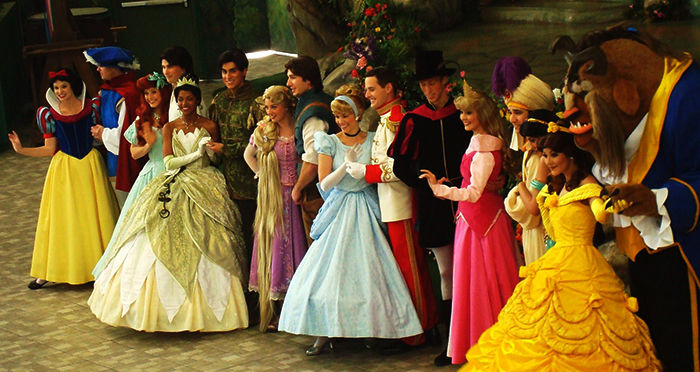Disney may teach children too much about relationships
March 23, 2017
In recent years, Disney’s princesses have shifted from damsels in distress to perceivably empowered heroines. From “Brave’s” Merida, who refuses to be married off, to “Frozen’s” Elsa and Anna, who emphasize the importance of sisterhood, female characters are taking on more substantial and meaningful positions within their stories’ plots compared to Cinderella and Princess Aurora.
To learn more about gender roles portrayed through the media, I talked to Stacey Hust, an associate professor of strategic communication, who researches the intersections between the media, adolescence, and sexual health and violence, including gender stereotypes and romantic relationships. She said stereotypes exist in almost all forms of media.
“The media gives us shortcuts or scripts,” she said. “If we see how something is portrayed in the media, we use what we see in our daily interactions to understand what’s happening.”
She explained that women are often portrayed as subservient, or playing the role of a sexual object, where their beauty and physical appearance are more valued than their personality and intellect. This has been the case in many original Disney movies, such as “Cinderella,” where Cinderella is courted for being the belle of the ball.
Hust explained that in American culture, parents face a unique period in their daughters’ lives, called “the Disney Princess Stage,” in which little girls will magically transform into the princess of their choosing (my choice was Mulan).
Parents should take advantage of this time in their child’s development to explain that being a princess is much more than putting on a dress and looking pretty; a princess is the ruler of a nation. Her choices will potentially impact thousands or millions of lives. In the real world, a princess has an extremely public and demanding position in the nation over which she rules, and women in these roles do not have time to be damsels in distress. This is how Disney needs to start portraying its female protagonists.
While Disney has transitioned from making men the heroes of the narrative, one thing has not changed: the roles of the princesses or female protagonists all revolve around romantic relationships. Parents tend to think of Disney movies as kid’s movies, but Hust said they should be considered romantic comedies, as they may be your child’s first exposure to romantic relationships.
Hust explained another gender stereotype that can be harmful to women: the idea that men can be successful without being married, but that if a woman chooses her career over marriage, she is seen as missing out on an important aspect of her life.
This expectation can lead to relationship inequity, in which a woman values her relationship more than a man, and ultimately makes more sacrifices to maintain it. We see this is in “The Little Mermaid,” as Ariel sacrifices her voice in order to meet her land-dwelling lover, Prince Eric.
“It’s not that you shouldn’t show your kids Disney movies,” Hust said, “it’s just important that the viewing be followed up with a conversation about the content, especially if the content is not congruent with your family values.”
Disney narratives portray complex relationships and provide room for constructive conversation with your children. If it seems like I’m overthinking this, try to explain to your five-year-old why Belle, the outcast of society, is attracted to a “horrible, monstrous beast” after he held her captive in his tower, separated her from her father and disciplined her for exploring the castle.
While I am a huge fan of “Beauty and the Beast,” the movie presents some relationship themes that may require further explanation to a child and could be potentially deemed unhealthy, such as violence and coercion.
Disney, and the film industry in general, is certainly making improvements to portray women in a stronger light with heroines like Tiana and Merida, but there is still a long way to go. The films still maintain romantic relationships as central to their plot line, but I think it’s time to start emphasizing the importance of intellect and charity rather than courtship and marriage.
In allowing children to view these films, we need to understand the messages they are sending about the importance of romance in their lives and decide if this is how and when we want our children to learn the ins and outs of a romantic relationship.
Gabriella Ramos is a sophomore communication major from Chicago. She can be contacted at [email protected].









